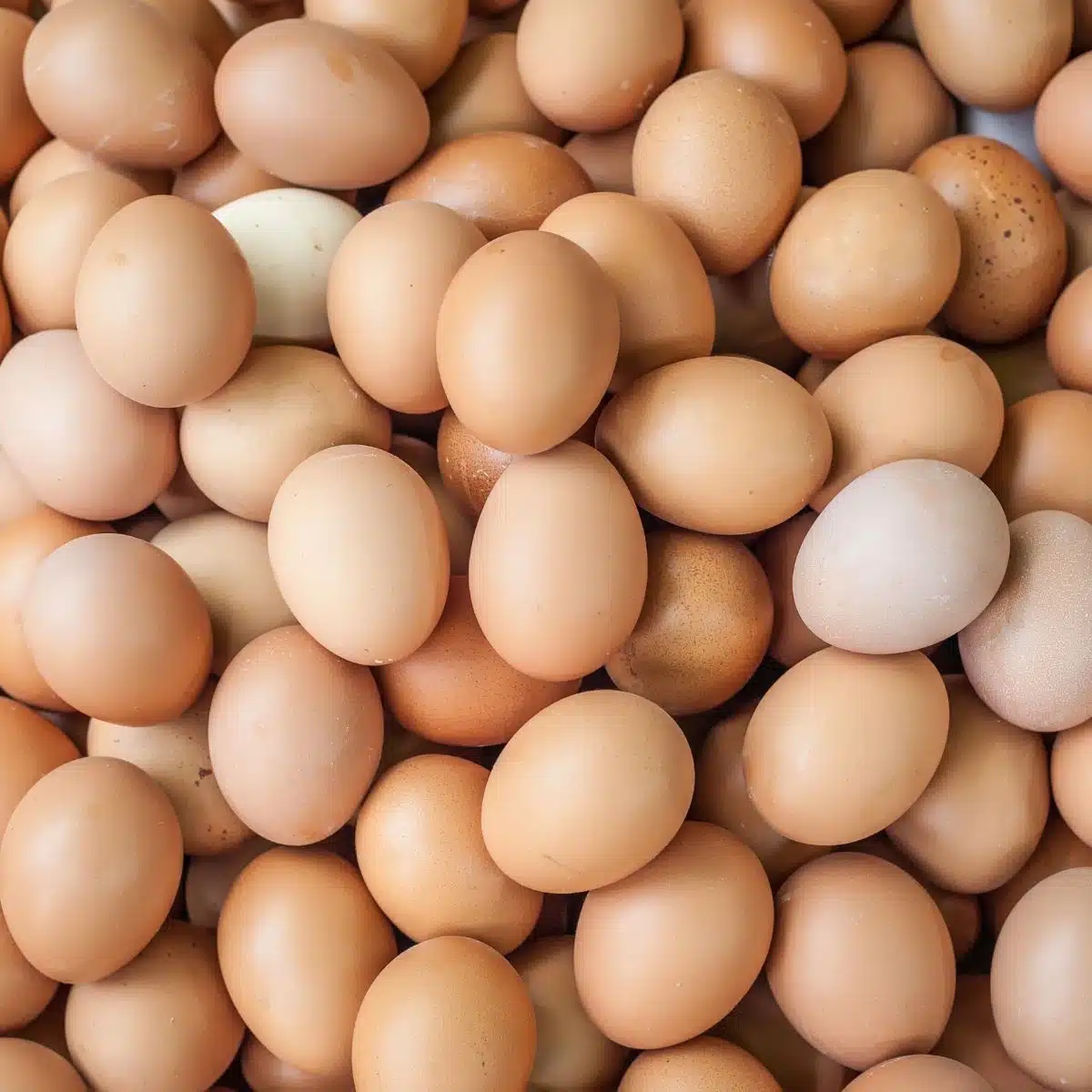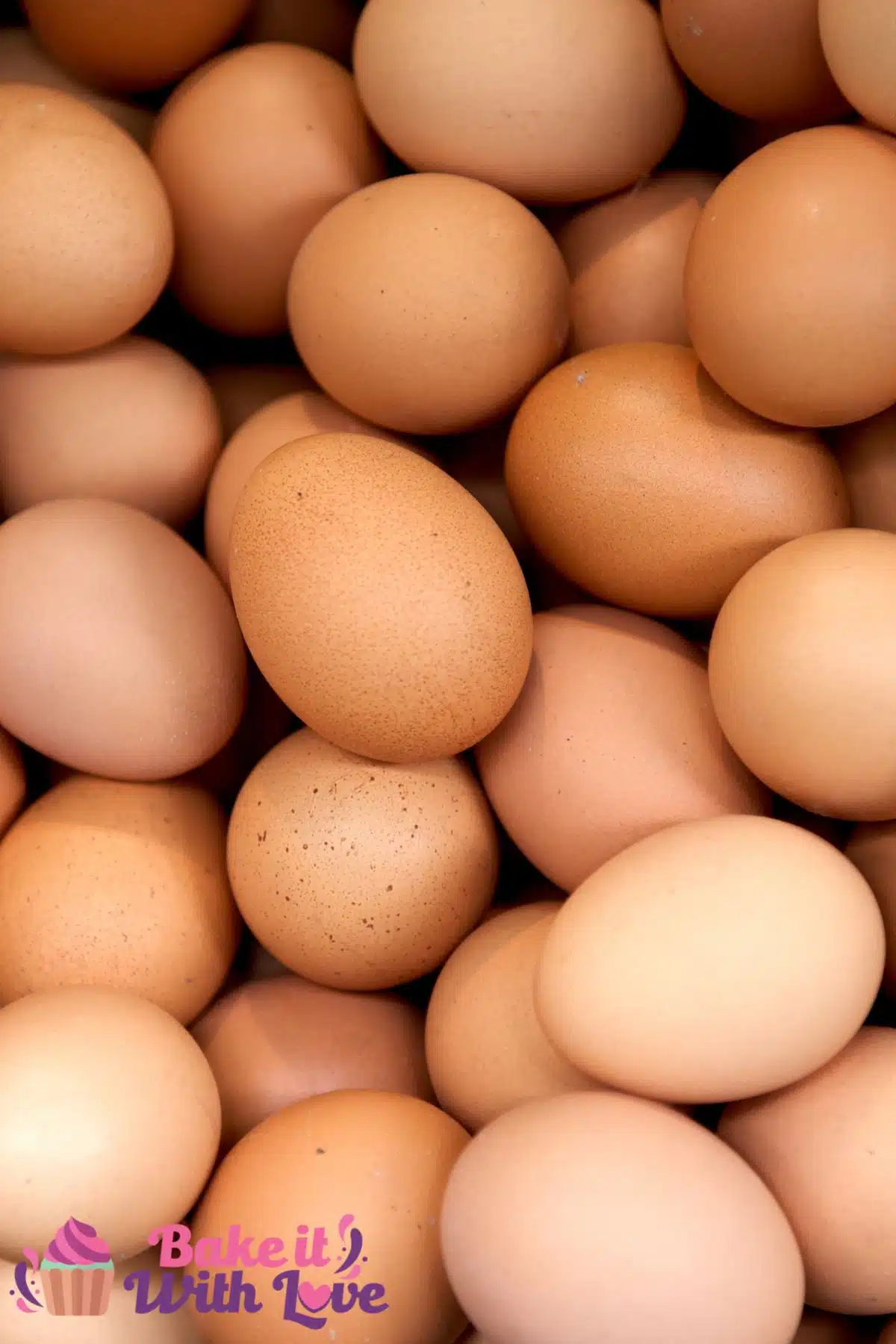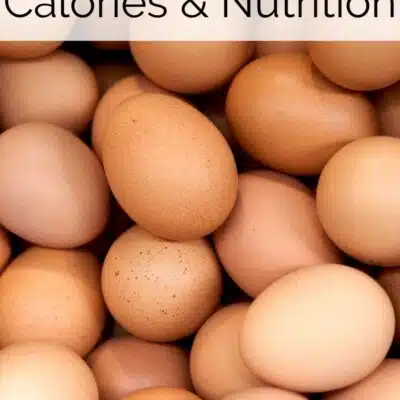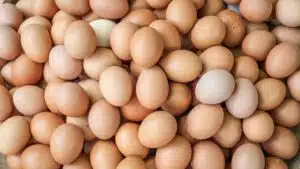Egg calories and nutrition: The ultimate guide to understanding all of the various nutritional values in eggs! From macronutrients to calories, this guide covers everything you need to know! Go ahead and keep reading to learn why you should incorporate eggs, egg yolks, and egg whites into your diet!
Guide To Egg Nutrition
The incredible edible egg. It is one of the most popular foods in the world.
Moreover, it is one of the most versatile foods. From the staple food in a simple breakfast to the key ingredient that holds your favorite desserts together.

Jump to:
How much do you really know about this amazing food though? If you have found your way here, then you are ready to know how many calories are in eggs.
I have the answer for you. And, if you keep reading I will break it down even further to tell you how many calories are in both egg yolks and egg whites.
How Many Calories In An Egg
When it comes to measuring the calories in food, there is one thing to consider. Size.
Most foods, especially natural foods (like eggs, avocados, and bananas) come in varying sizes. Therefore, to get an accurate measurement of calories you need to know what size eggs you are using.
The nice thing about eggs is that when you buy them at the store it says on the carton the size they are. The most common eggs to be sold in grocery stores are medium or large.
While technically there are eggs smaller than medium, they are not commonly sold in stores. In addition, recipes that call for eggs are typically referring to large-sized eggs.
Even though large eggs are the ones most likely to be used for at-home baking, I have provided the calories for a variety of sizes. Therefore, you can choose based on the size you have at home.
- Small Egg = 54 calories
- Medium Egg = 63 calories
- Large Egg = 72 calories
- Extra Large Egg = 80
Since many people buy their eggs from local farmers or have chickens at home you may not know the exact size of the egg. If you know the type of chickens the eggs come from you can search for the size of eggs laid by these chickens. In addition, you can also ask your local farmer.
More than likely, eggs your own chickens lay or ones you get from a farmer will be medium or large. As you can see above, there is only a 9-calorie difference between these two sizes. Therefore, if you are not a hundred percent sure of the size you can use an average of these two and know that you will be quite close to how many calories are in the eggs you have.
Calories In An Egg Yolk
While most recipes call for whole eggs there are several times when you may only need to use the yolk. For example, if making custard.
Since recipes typically call for large eggs, I have provided the calories for a single yolk in a large egg.
- 1 Large Egg = 55 calories
If you are using eggs that are smaller or larger than a large egg you can adjust based on the calories for whole eggs listed above. The yolk makes up about 75% of the calories in a whole egg. Therefore, you can determine calories in different yolk sizes by determining 75% of the calories for the whole egg.
Calories In An Egg White
While many recipes call for only egg yolks there are several times when a recipe will call for only egg whites. In addition, many people choose to eat only egg whites to save calories.
Whether you are making a recipe that calls for all egg whites, like a meringue, or you want to save calories at breakfast, begin with the calories listed below.
- 1 Large Egg White = 17 calories
Macronutrients In Eggs
Calories are a great place to begin when looking at the nutritional benefits of eggs. However, there are other things to consider. Such as the macronutrients.
Eggs are primarily made up of protein and fat. Below is a breakdown of the fat and protein found in different egg sizes.
Small Egg
- 3.6 grams of fat
- 4.8 grams of protein
Medium Egg
- 4.2 grams of fat
- 5.5 grams of protein
Large Egg
- 4.8 grams of fat
- 6.3 grams of protein
Extra Large Egg
- 5.3 grams of fat
- 7 grams of protein
Eggs do not contain a significant amount of carbs at any size. Therefore, carbohydrates are not listed as a macronutrient present in eggs.
Macronutrients In Egg Yolk
Just like when the calories change when using only the yolk, so do the macronutrients. Below is a breakdown of the macronutrients in a large egg.
- 4.5 grams of fat
- 2.7 grams of protein
As you can see, the egg yolk holds most of the fat in the egg. Therefore, if you are looking for a low-fat or low-calorie choice it is best to limit eating only egg yolks.
However, as you will see down below, while the egg yolk is higher in fat than the egg white it also contains all of the vitamins and minerals.
Macronutrients In An Egg White
If finding a low-calorie protein choice is important for you then egg whites are an excellent choice. As you will notice below, an egg white contains more protein than a yolk. Moreover, a large egg white has minimal fat.
- .1 gram of fat
- 3.6 grams of protein
There are also very few micronutrients – only trace amounts of potassium and some sodium.
Micronutrients In Eggs
Beyond fat, protein, and carbohydrates, every food contains micronutrients. These are the vitamins and minerals found in foods.
Eggs are a great source of macronutrients. As you can see below they provide a full range of different vitamins and several minerals.
- Vitamin D
- Vitamin B-6
- Iron
- Calcium
- Magnesium
- Vitamin A
In addition to the benefits of the vitamins and minerals above, eggs also contain sodium and cholesterol. Therefore, some people prefer to not eat eggs when they are trying to lower their sodium intake or their overall cholesterol.
When trying to lower sodium or cholesterol the best choice is to eat more egg whites and fewer egg yolks. The egg whites have much lower levels of these two micronutrients.
However, egg whites do not contain any of the other micronutrients. The yolks contain all of the vitamins and minerals. Therefore, it is beneficial to include some yolks into your diet to get a more full source of vitamins and minerals in your diet.
The Nutritional Value of Eggs
As you can see, eggs are full of nutrition. They provide the body with healthy protein and important fats, minerals, and vitamins.
Therefore, every time you cook or bake with eggs you are getting these nutritional properties. Moreover, with the ease of separating egg yolks and egg whites, you have control over how many calories in each egg you are going to consume.
To help you get the most from your eggs, come back to the chart above anytime you need to make a healthy decision on how many calories you want to consume from eggs.
I hope this post has helped you understand the nutritional breakdown of eggs! Leave a comment down below and let me know what you think!
>>>>See all of my recipes here<<<<

🍳 Tasty Egg Recipes
- Egg Burger - This savory burger is topped with an egg for an extra delicious meal!
- Egg Salad - Either enjoy this egg salad by itself or use it to make the best egg salad sandwich!
- Instant Pot Hardboiled Eggs - This is the best method for making perfect hardboiled eggs every time!
- Hash Brown Egg Cups - These tasty cups are a quick and easy breakfast!
- Microwave Scrambled Eggs - You can easily enjoy some tasty scrambled eggs without having to turn on the stove!
- Hashbrown Sausage Bacon Egg Casserole - A hearty and tasty casserole that will satisfy all of your breakfast cravings!
Do you love a recipe you tried? Please leave a 5-star 🌟rating in the recipe card below and/or a review in the comments section further down the page.
Stay in touch with me through social media @ Pinterest, Facebook, Instagram, or Twitter! Subscribe to the newsletter today (no spam, I promise)! Don't forget to tag me when you try one of my recipes!
📖 Recipe Card
Egg Calories And Nutrition: Scrambled Eggs (+More Tasty Recipes!)
Ingredients
- 4 large eggs (at room temperature)
- ¼ cup half & half (or heavy cream, or whole milk)
- ¼ teaspoon salt (to taste)
- 1 tablespoon butter
- ground black pepper (to taste)
- parsley (optional garnish, chopped)
(Note: 2x or 3x only changes the ingredient list)
Instructions
- In a mixing bowl, beat the eggs, half & half, and salt until the eggs are broken down, evenly colored, and light and foamy.
- Bring a small non-stick skillet with the tablespoon of butter to medium heat until the butter melts. Coat your whole skillet with the melted butter (it should be starting to bubble too).
- Reduce heat to medium low and add the beaten eggs. Wait and watch for the edges to start setting, then use a spatula to scrape gently across the pan. Pull the cooking eggs from side to side, allowing the uncooked egg to fill the pan. Repeat after waiting for the eggs to set around the edges of the skillet again.
- Once the eggs are mostly cooked and have nice big folds in them, fold any uncooked sections down into the skillet. Pull the scrambled eggs together to finish cooking, then remove from heat. *The eggs will still appear slightly moist, they will continue cooking even once plated.
- Transfer onto your plates and serve seasoned with freshly ground black pepper and chopped parsley.
Notes
- Using a fork to beat the eggs before scrambling is an old habit, but using a whisk is best. It will evenly distribute the yolk and whites.
- Whisk the eggs until frothy and light for perfectly fluffy scrambled eggs.
- Cook your eggs slowly for the best texture, medium-low is best to prevent dry eggs.
- Do not season with pepper until the eggs are fully cooked! Pepper will turn the scrambled eggs an unsightly grey color.



Comments
No Comments